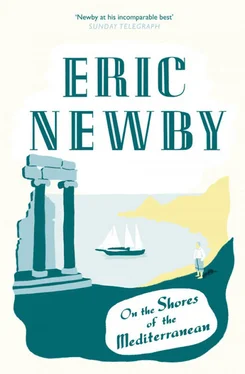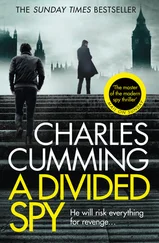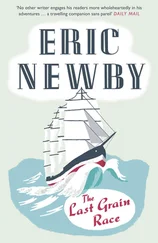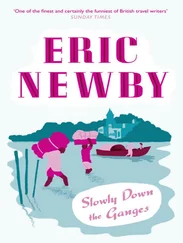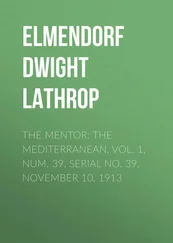And what about the orange light? It is a reasonable question to ask.
‘And what about the orange light?’ Luccano de Crescenza, a Neapolitan photographer and writer, the author of a very amusing book on the habits of his fellow citizens, La Napoli di Bellavista , once asked an elderly inhabitant who passed the time of day at various traffic lights, presumably waiting for accidents to occur. To which he replied, ‘l’Arancio? Quello non dice niente. Lo teniamo per allegria.’ (‘The Orange? That doesn’t mean anything. We keep it to brighten the place up.’)
This tunnel, and another which also runs under Monte Posillipo, more or less parallel to it, the Galleria Quattro Giornate, replace the tunnel, a wonder of ancient engineering more than 2200 feet long, 20 feet wide and in some places 70 feet high, that linked Roman Napolis with the Phlegraean Fields.
Above the eastern portal of this tunnel, now closed, which emerged at Piedigrotta (Foot of the Grotto) next door to the Mergellina railway station, there is what is said to be a Roman columbarium, a dovecote. It stands on what is supposed to be the site of the tomb of Virgil, who was buried on Monte Posillipo after his death in Brundusium, the modern Brindisi, on his way back from Greece, in September, 19 BC and which was visited by John Evelyn on his way to the Phlegraean Fields in 1645.
Previously Virgil had lived in a villa on the hill where he composed the Georgics and the Aeneid but was so dissatisfied with the Aeneid , which he had written for the glorification of Rome, that he gave orders that after his death it should be destroyed, a fate which, mercifully for posterity, was avoided by the intervention of the Emperor Augustus, who forbade it.
Although it was by now after eleven o’clock in the evening and a weekday, it was August, holiday time, and the tables in Piazza Sannazzaro were as crowded as they had been two or three hours previously. In fact the tables were so closely packed together that the only way in which it was possible to be sure which establishment one was patronizing was by the different colours of the tablecloths.
These were very cheap places in which to eat, that is to say you could have a meal, the principal plate of which might be risotto or spaghetti con vongole , clams, which we hoped had been dredged from some part of the Mediterranean that was not rich in mercury and other by-products of industry, and almost unlimited wine (at least two litres) at a cost of about 12,000 lire for two. (At this time, August 1983, the exchange was around L2395 for £1, L1605 for $1.) Here, you could eat an entire meal, which few of the sort of Napoletani who brought what appeared to be their entire families with them could afford to do, or a single dish. Or you could eat nothing at all and simply drink Nastro Azzurro, the local beer which, strangely enough, is better in bottles than on draught when it is usually too gassy, or wine, or Coca Cola. Here, in the Piazza, beer drinkers outnumbered wine drinkers.
One of the sources of drink in Piazza Sannazzaro was a dark little hole in the wall with VINI inscribed over it on a stone slab, from which this and the various other beverages were dispensed by a rather grumpy-looking old woman in the black weeds of age or widowhood or both, who spoke nothing but the Neapolitan dialect. This dispensary formed in part an eating place called the Antica Pizzeria da Pasqualino which offered four different varieties – gusti specialità – of pizza: polpo (with octopus) al sugo, capricciosa, frutta di mare and capponato , presumably filled with capon. These pizzas are good. They make anything bought outside Italy, and some pizzas made in Italy and even in Naples by those who are not interested in making them properly – a bit of underbaked dough smeared with salsa di pomodoro , tomato sauce, and adorned with a few olives and fragments of anchovy – seem like an old tobacco pouch with these items inside it. The sort of pizza that the English traveller Augustus Hare was offered when in Naples in 1883, the one he described as ‘a horrible condiment made of dough baked with garlic, rancid bacon and strong cheese … esteemed a feast’.
What he should have been eating is something of which the foundation is a round of light, leavened dough which has been endlessly and expertly kneaded, on to which have been spread, in its simplest form, olive oil, the cheese called mozzarella, anchovies, marjoram and salsa di pomodoro , and baked in a wood-fuelled oven.
Amongst all the Napoletani there were very few foreigners to be seen. This was because there is relatively little accommodation in Mergellina – a couple of small hotels and three pensioni – and very few visitors to Naples, once they find out what can happen to them in the city, unless they are young and active and travelling together in a band, are at night prepared to go far from the area where they are actually sleeping.
Our evening in Piazza Sannazzaro had been almost too full of incident. Just after nine o’clock, a boy had ridden up on a Vespa and stopped outside the Trattoria Agostino, a place very similar to the one we were in and about fifty yards away on the corner of Via Mergellina, at its junction with the Salita Piedigrotta. There, at point-blank range, without dismounting, he had fired five shots in rapid succession, from what sounded to me more like a peashooter than a pistol, at a man sitting at a table outside the establishment, apparently trying to gambizzare , blow his kneecaps off, all of which missed, except one which grazed his bottom.
The man at the table was Mario dello Russo, aged thirty-four. He had a criminal record as a member of the Camorra, a fully fledged member of the Nuova Famiglia, the principal rivals of the now-ascendant Nuova Camorra Organizzata (NCO) with whom they were currently engaged in a fight to the death, or until some other satisfactory arrangement could be arrived at.
This battle, which was taking place under our eyes, was for the ultimate control of almost everything criminal: robbery, kidnapping, intimidation of shopkeepers, all sorts of smuggling including drugs, male and female prostitution and illegal property development not only in Naples and the offshore islands of Ischia and Capri but in the whole of Italy from Apulia and Calabria in the deep south as far north as Milan.
After five minutes, three cars loaded with members of the Squadra Mobile arrived, together with an ambulance, and dello Russo was carted off. The boy who actually fired the shots was, in fact, a person of no consequence, what is known in the Camorra, an organization with unchanging, traditional ways of doing things, rather like Pop at Eton, as a Picciotto di Onore, a Lad of Honour, an unpaid apprentice to the Camorra, anxious to prove his worth and loyalty to the cause. The next step up the ladder was to become what used to be called a Picciotto di Sgarroe. This needed a far greater degree of self-sacrifice and abnegation, the postulant often being required to take the responsibility for crimes committed by fully fledged Camorristi and to accept whatever sentence was meted out to him by law, even if it meant spending years in prison.
Altogether, on that day alone, in the last week of August, those arrested in and around Naples included the uncle of Luigi Giugliano of Forcella, a high-ranking member of the Nuova Famiglia who had been instantly deported to Frosinone; three traffickers in hard drugs; two pairs of brothers, all between twelve and seventeen years of age, who between them had broken into twenty different apartments in the districts of Vomero and Colli Aminei, two of them being armed; a man who had assaulted the police while they were chasing two thieves; Vicenzo Scognamiglo, aged forty-nine, who had stolen a wallet from an Iranian; Bruno and Gennaro Pastore, for snatching a handbag from an American tourist; and Salvatore Imparata, aged fifty-six, and Giovanni Lazzaro, twenty, both of whom were found to be carrying guns.
Читать дальше
